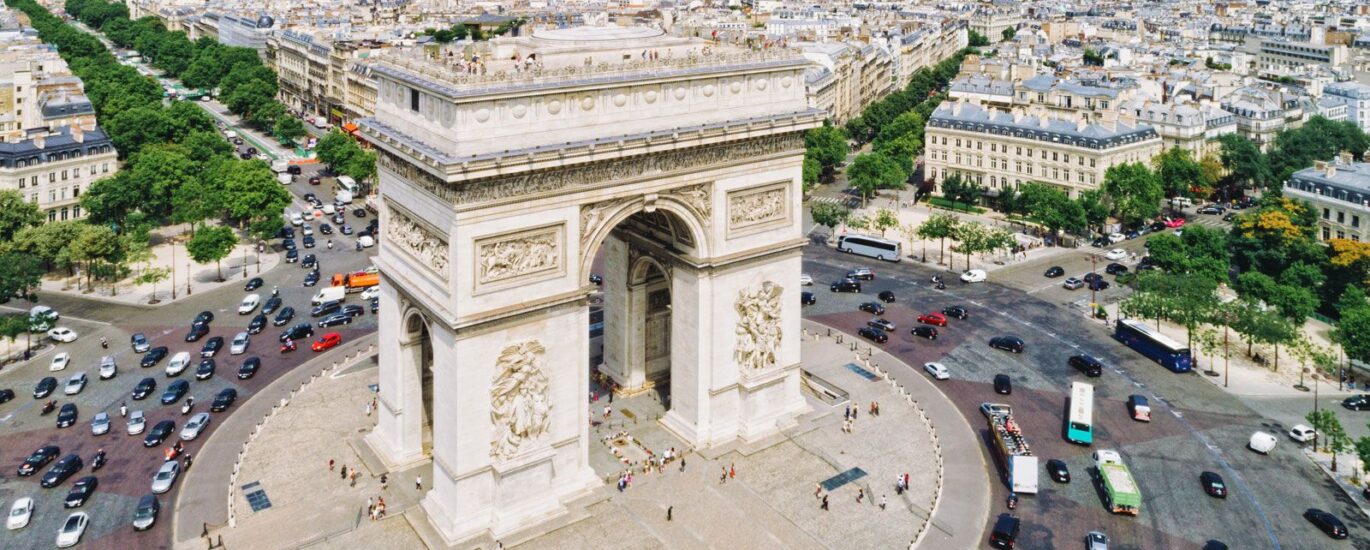As you stand before the Arc de Triomphe, imagine a time when Paris was at the heart of Napoleonic Europe. The year was 1806, and Napoleon Bonaparte had just achieved a stunning victory at Austerlitz, cementing his reputation as one of history’s great military strategists. To commemorate his triumphs and honor those who had fought bravely for France during the Revolutionary and Napoleonic Wars, he commissioned the construction of a grand monument — the Arc de Triomphe. Designed by architect Jean Chalgrin, this triumphal arch would take three decades to complete, a testament to the turbulent times and the ambitious vision of its creators.
The foundations of the Arc were laid amidst the grandeur of Napoleon’s empire, but the path to completion was fraught with interruptions. Chalgrin passed away in 1811, and political upheavals, including the fall of Napoleon, led to construction halts. It wasn’t until 1836, under the reign of King Louis Philippe I, that the Arc was finally inaugurated. The monument became a symbol of France’s resilience and its storied military history.
Standing at 50 meters tall, the Arc de Triomphe was, for a time, the tallest arch in the world. Its design drew inspiration from the Arch of Titus in Rome, yet it surpassed its predecessor in scale and detail. The arch’s massive pillars are adorned with intricate relief sculptures, depicting scenes of French victories and heroic deeds. Look closely, and you’ll see the names of 660 generals and numerous battles etched into the stone, immortalizing their contributions.
Beneath the arch lies the Tomb of the Unknown Soldier from World War I, a somber reminder of the countless lives lost in conflict. Since 1923, the eternal flame has been rekindled daily, a poignant tribute to the fallen.
The Arc de Triomphe has witnessed many historic moments. On December 15, 1840, the remains of Napoleon were ceremoniously returned to Paris, passing beneath the arch on their way to Les Invalides. In 1919, just after the end of World War I, pilot Charles Godefroy daringly flew his biplane through the arch’s vault, a feat of skill and audacity captured on film.
Over the years, the Arc de Triomphe has become a focal point for national celebrations and commemorations. It serves as the starting point for the annual Bastille Day military parade, an event that draws thousands of spectators. As you explore the observation deck, take in the panoramic views of Paris. From here, you can see the historic Champs-Élysées stretching out towards the Place de la Concorde and the Louvre, a reminder of the city’s rich cultural tapestry.
Today, the Arc de Triomphe stands not only as a monument to past victories but as a beacon of unity and remembrance. It continues to capture the imagination of visitors from around the world, inviting them to reflect on the legacy of those who shaped France’s history.




